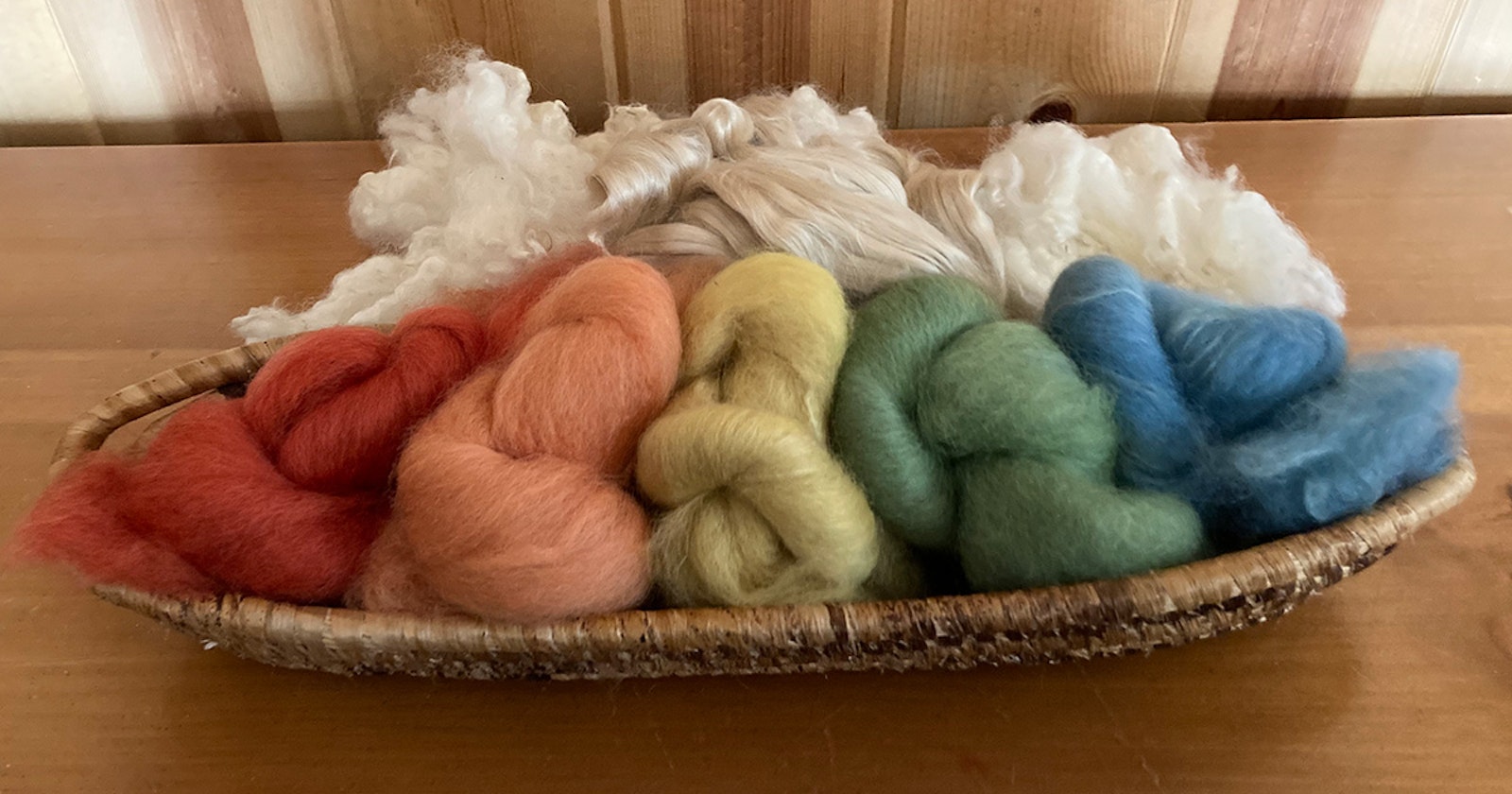This is the first of a two-part series. —Editor
In the fall of 2020 I went through a flurry of dyeing. I had a beautiful Romney fleece and bump of tussah silk top and planned on dyeing both with a series of natural dyes in order to have a record of what the dyestuffs would look like on wool and silk using my city water and dye recipes. While I planned to keep a small sample of each fiber as a reference, I knew that I wanted to blend the fibers together to make a wool/silk blend to spin, but without a clear plan of what to do with the finished yarn.
I used dyer’s polypore, wolf lichen, dyer’s chamomile, and marigold to dye yellows, and overdyed half of each amount of yellow in indigo to get various greens. Madder provided red, with exhaust baths giving me a variety of shades of paler reds and pinks. Indigo gave me blue, while walnut rounded out the various hues with a warm brown. I also kept some fleece and silk undyed to provide a creamy white.

Walnut-dyed Romney: Unpicked wool on the right, picked wool ready for carding on the left.
To prepare the fiber for carding I picked the dyed fleece open and pulled the silk top, which can look ruined after a simmer in a dye pot, into 4- to 6-inch lengths, attenuating the top along the length and width to open up into cardable amounts. I carded the blends on my drum carder, aiming for a reasonably even amount of wool and silk in each batt without weighing or measuring. I judged this by eye, first putting some wool through the carder, then adding a small amount of silk, followed by more wool, then another layer of silk, and ending again with wool.

Wool and silk batt after two passes through the carder.
After removing this batt I put it through the carder again and then set it aside. Once I had carded all the fiber of that color and dyestuff I divided the batts, mixed them up, and put them through the carder one more time in order to even out any discrepancies between individual batts.
A basket full of blends halfway through the spinning process, providing inspiration and joy to look at while spinning.
To spin the batts I divided them into a 'Z' by taking a third and carefully separating it—almost but not totally—to the opposite end of the bat. I then repeated it in the other direction and back again. Once I had this ‘Z’ of fiber I attenuated it into a roving. I spun the yarn using a short draw, enjoying the shine of the silk and the Romney and how this displayed the colors. As I spun I began to think about what I wanted to use the fiber for and decided that it would make a good weaving yarn—the combination of longwool and silk adding strength to the yarn—and so I made a two-ply. I enjoyed looking at the basket of skeins accumulating and dreaming of what to make and I eventually hit upon a use that would be both practical and beautiful. Stay tuned—I will describe my concept in Part Two!
Devin Helmen has been immersed in fiber since learning to spin at age 8. They spin, knit, and weave in beautiful Minnesota. Devin enjoys writing and teaching about fiber arts and has a passion for spindles and everyday textiles. They blog, intermittently, at www.afewgreenfigs.blogspot.com.

